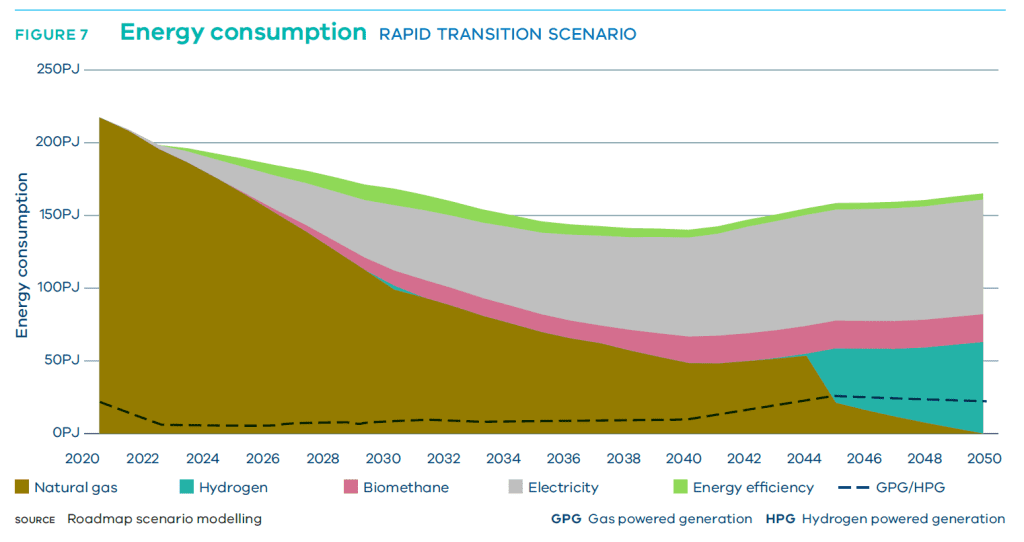A simplified guide.
Gas is used in a broad range of Victorian businesses, from heating commercial buildings to powering industrial processes in the manufacturing sector.
Under the Victorian Government’s Gas Substitution Roadmap, a path is mapped to accelerate the switch from gas to electricity, allowing emissions reduction and the management of energy costs simultaneously. The commercial sector primarily uses gas for space heating, water heating and hospitality requirements, and will often be able to switch these activities to efficient and widely available electric technologies. The use of gas in the industrial sector is more diverse, ranging from low temperature water heating requirements, to low and medium temperature steam for the food and beverage industry, to very high temperature needs in sectors such as metals, glass and ceramics.
Lower temperature requirements are often well suited for electrification, as high efficiency electric technologies can meet these needs. For example, an electric heat pump that heats water or creates lower-temperature steam may use three to four times less energy than a gas boiler.
Roadmap multi-sector scenario modelling.
The following roadmap shows the multi-sector modelling, not just for business and industry, but also includes households and the Victorian Government’s own gas use transition.
Under a Rapid Transition scenario it highlights the potential to halve the natural gas consumption from 2020 to 2030.

Not just cutting energy bills – extra financial incentives through the creation of VEECs.
The Victorian Energy Upgrades (VEU) program provides businesses with incentives to reduce their gas use by installing new, efficient equipment, such as efficient electric water or space heaters, or efficient commercial and industrial gas boilers.
Recently Commercial and Industrial Heat Pump Water Heaters (C&I HPWH) were introduced into the VEU program.
Under the VEU, the upgrades can attract one of many methods to create Victorian Energy Efficiency Certificates (VEECs) and receive financial incentives for reducing their gas use and cutting emissions.
VEECs may be created through either a Project Based Activity Measurement and Verification (PBA M&V) method, or through a deemed method depending on the scale and technology of the upgrade occurring.
M&V projects are technology agnostic, meaning that the upgrade technology harnessed does not have to be a specifically approved method under the VEU program. This is especially relevant for industrial upgrades where tailored or customised solutions are designed for the site.
This is possible through gaining baseline gas and electricity data prior to the upgrade, followed by measuring both for a period after the upgrade. Both periods are modelled and compared to determine the net gas or electricity savings resulting from the upgrade. These savings are converted into a carbon dioxide equivalent, and a number of scheme specific factors are applied to determine the volume of VEECs created. These VEECs are then monetised, creating an additional revenue stream for the project.
Ecovantage can offer VEEC creation for your gas substitution or gas efficiency upgrades.
A viability study is completed for each project opportunity to evaluate the emissions reduction, certificate creation and financial outcomes.
To explore certificate creation opportunities for your gas efficiency or electrification projects please contact our team of professionals today.

 Victoria
Victoria




